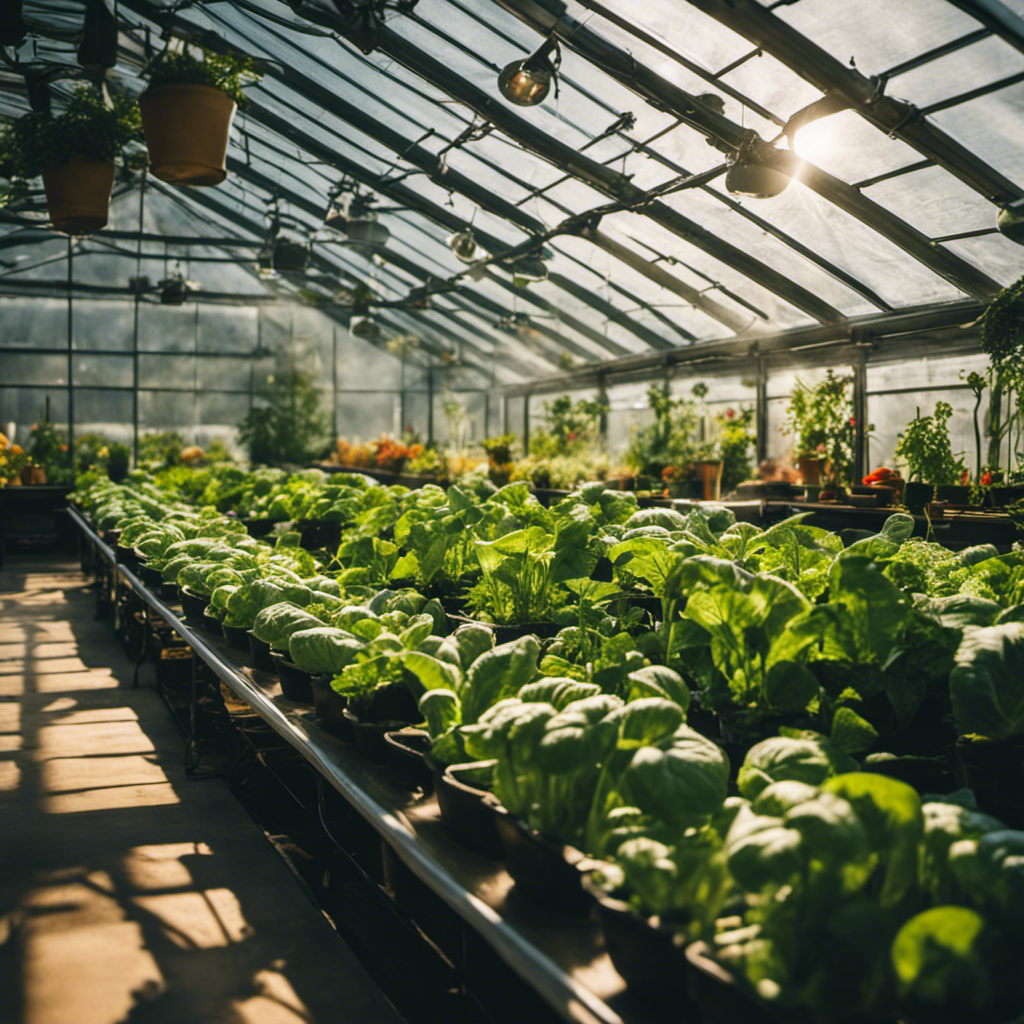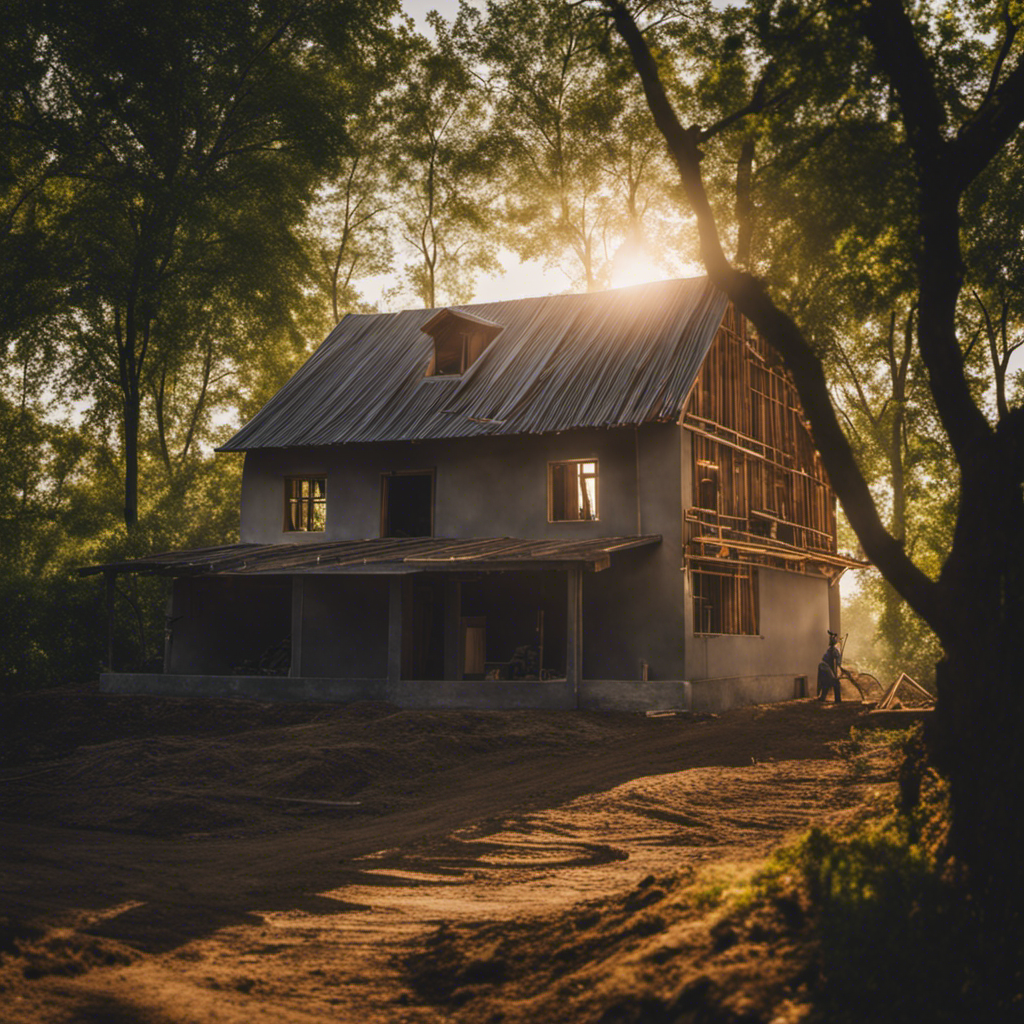Backyard enthusiasts, we bring you the Top 5 Innovations in Greenhouse Farming! Get ready to revolutionize your gardening game with Automated Climate Control Systems, Vertical Farming Solutions, Hydroponic Growing Techniques, Energy-Efficient Lighting Options, and Smart Irrigation and Water Management Systems.
These cutting-edge advancements are designed to boost productivity, optimize resource utilization, and enhance your overall yield. So, buckle up and prepare to embark on a journey of innovation and sustainable cultivation.
Let’s dive into the world of greenhouse farming like never before!
We’ve heard great things about the efficiency and convenience of using automated climate control systems in greenhouse farming. These systems, equipped with automated ventilation systems, offer precise control over temperature and humidity levels, ensuring optimal growing conditions for plants.
Temperature and humidity monitoring is crucial in greenhouse farming as it directly affects plant growth and overall productivity. Automated climate control systems use sensors to continuously monitor these parameters and make necessary adjustments. This eliminates the need for manual monitoring and intervention, saving time and effort for greenhouse farmers.
The automated ventilation systems integrated into these climate control systems help maintain proper airflow, preventing the buildup of excessive heat or moisture. Overall, these systems enhance the productivity and success of greenhouse farming by providing a controlled environment that promotes healthy plant growth.
One of the most promising vertical farming solutions is the combination of hydroponics and LED lighting. This innovative approach to farming has gained significant attention due to its ability to maximize space and resources while minimizing environmental impact. It allows for the efficient and year-round cultivation of crops in urban areas.
Wall mounted planters are vertical structures equipped with hydroponic systems that provide plants with the necessary nutrients and water directly to their roots. They’re ideal for small spaces and can be easily installed on walls or fences.
Hanging basket gardens are designed to hold a variety of crops, such as herbs or strawberries. They can be hung from ceilings or beams and utilize hydroponic or aeroponic systems to provide plants with the necessary nutrients and water.
The efficient use of LED lighting is another key aspect of vertical farming. LED lights are used to provide the necessary light spectrum for plant growth, while consuming less energy compared to traditional lighting methods.
Vertical farming, combined with hydroponics and LED lighting, allows for the cultivation of crops regardless of the season. This makes it ideal for urban areas with limited access to fresh produce, as it provides a reliable source of year-round cultivation.
Let’s explore the benefits of using hydroponic growing techniques in our greenhouse for year-round crop production.
Hydroponics, a soil-less cultivation method, utilizes nutrient solutions to provide plants with the necessary elements for growth. This technique offers several advantages over traditional soil-based farming.
Firstly, hydroponics allows for precise control over nutrient levels, ensuring optimal growth and yield. Additionally, it eliminates the need for soil, reducing the risk of soil-borne diseases and pests. Furthermore, hydroponic systems require less water compared to conventional farming methods, making them more sustainable and environmentally friendly.
By implementing hydroponics in our greenhouse, we can maximize crop production while minimizing resource consumption.
Now, let’s shift our focus to explore energy-efficient lighting options, another crucial aspect of greenhouse farming.
We can consider using LED lights as they’re a highly energy-efficient lighting option for our greenhouse. LED lights have become increasingly popular in recent years due to their numerous advantages over traditional lighting options.
Here are some reasons why LED lights are a great choice for greenhouse lighting:
We should explore the benefits of implementing smart irrigation systems, as they can efficiently monitor and control water usage in our greenhouse.
Smart irrigation systems utilize advanced technology to optimize water distribution, ensuring that plants receive the right amount of water at the right time. One of the key features of these systems is the use of drip irrigation techniques, which deliver water directly to the plant roots, minimizing evaporation and runoff. This targeted approach not only conserves water but also promotes healthier plant growth.
Additionally, smart irrigation systems can incorporate rainwater harvesting methods, allowing us to collect and store rainwater for later use. By integrating these innovative techniques into our greenhouse, we can maximize water efficiency and create a more sustainable and environmentally-friendly farming system.
Key Takeaways
- Automated climate control systems with ventilation and sensors offer precise control over temperature and humidity levels, eliminating the need for manual monitoring and intervention.
- Vertical farming solutions combine hydroponics and LED lighting to maximize space and resources, making it suitable for small spaces like backyard gardens.
- Hydroponic growing techniques provide a soil-less cultivation method that maximizes crop production while minimizing resource consumption and eliminates the risk of soil-borne diseases and pests.
- Energy-efficient lighting options, such as LED lights, consume less energy, have a longer lifespan, and offer adjustable spectrum for optimal plant growth, making them an eco-friendly choice for greenhouse lighting.
Automated Climate Control Systems
[bulkimporter_image id=’2′]
Vertical Farming Solutions
[bulkimporter_image id=’3′]
Hydroponic Growing Techniques
[bulkimporter_image id=’4′]
Energy-Efficient Lighting Options
[bulkimporter_image id=’5′]
- Energy efficiency: LED lights consume significantly less energy compared to other types of lighting, resulting in lower electricity bills and reduced environmental impact.
- Long lifespan: LED lights have a much longer lifespan than traditional bulbs, saving money on replacements and reducing waste.
- Adjustable spectrum: LED lights can be customized to provide specific light wavelengths that are optimal for plant growth, resulting in healthier and more productive crops.
- Solar powered options: LED lights can be powered by solar energy, making them a sustainable lighting solution for greenhouses.
Smart Irrigation and Water Management Systems
[bulkimporter_image id=’6′]
Frequently Asked Questions
How Much Does an Automated Climate Control System for a Greenhouse Cost?
An automated climate control system for a greenhouse can vary in cost depending on factors such as size, complexity, and brand. A thorough cost analysis is necessary to determine the specific price range.Can Vertical Farming Solutions Be Implemented in Small Backyard Spaces?
Yes, vertical farming solutions can be implemented in small backyard spaces. By utilizing innovative techniques such as vertical stacking and hydroponics, it is possible to maximize space for backyard farming, allowing for increased crop yield in urban areas.What Are the Advantages of Hydroponic Growing Techniques Over Traditional Soil-Based Farming?
Hydroponic growing techniques offer numerous advantages over traditional soil-based farming. Studies show that hydroponic systems can produce up to 30% higher crop yields, require 90% less water, and eliminate the need for harmful pesticides. The future prospects of vertical farming are promising.How Much Energy Can Be Saved by Using Energy-Efficient Lighting Options in Greenhouse Farming?
Using energy-efficient lighting options in greenhouse farming can lead to significant cost savings and reduce the environmental impact. Studies show that these innovations can save up to 50% of energy compared to traditional lighting methods.Are Smart Irrigation and Water Management Systems Compatible With Existing Water Supply Systems in Residential Areas?
Smart irrigation systems are compatible with existing water supply systems in residential areas, but challenges in water management arise due to varying water sources and quality. Implementing smart irrigation can optimize water usage and conserve resources.What Are Some Green Approaches I Can Use to Revamp My Farmhouse?
Looking to revamp your farmhouse with a focus on sustainability? Discover a range of eco-friendly farmhouse renovation techniques. Opt for energy-efficient appliances, install solar panels for renewable energy, implement systems for collecting rainwater, embrace organic farming methods, and incorporate natural materials in your decorations. These eco-conscious actions will reduce your ecological footprint while enhancing your farmhouse’s appeal.











